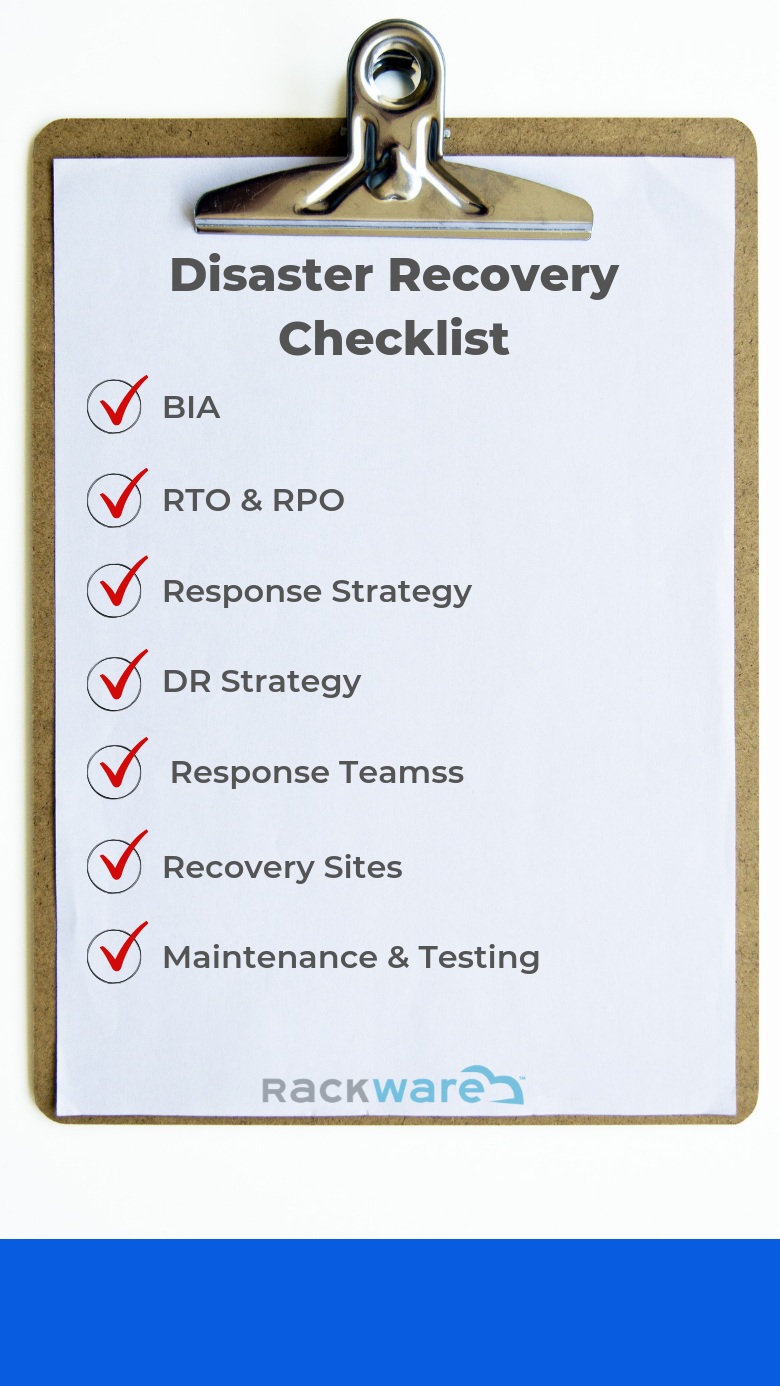Checklist for an Effective Disaster Recovery Plan
Why do you need a DR plan?
In previous years, various parts of the world have experienced monstrous natural disasters. Power outages lasting days, physical damages and breakdowns of supply chains caused thousands of businesses to be in the dark. Many of those affected are facing enormous amounts of rebuilding costs for their infrastructure. If a business has the means to make a come back, these challenges is a big hurdle to overcome. With a disaster recovery and business continuity plan already devised and ready to go, those organizations with the plans are one step closer to getting back on track.
A disaster recovery plan is curated to help businesses reduce the amount of damages that unpredicted outages may inflict. Having a DR plan is long term insurance for business performance. Besides natural disasters being capable of affecting anyone, no one is safe from human error. Since human error is always a possibility, it only makes sense to be prepared for those as well.
Here are the essential components when creating a DR plan.
Share this Image On Your Site
BIA
The best way to fight a threat is to know and understand the potential threats. The first step is to pinpoint possible threats and assess the probability that they will impact your organizations. This process will result in a risk analysis with a summary of threats relatable to your business. As your company starts the disaster recovery planning process, developing a risk matrix can help to establish priorities. In the risk matrix, types of disasters are classified and organized in the amount of damage each can incur. Once the risks have been identified and analyzed, the business impact analysis (BIA) can be made.RTO and RPO
The recovery time objectives and recovery point objectives are among critical concepts in a DR plan. Recovery time objective (RTO) refers to the amount of time allocated to recover applications, while recovery point objective is the amount of data a company risks losing during a recovery. RTOs and RPOs will differ from company to company, but every business will need to assess and prioritize their needs before setting these objectives. Determining which solutions to enact, RTOs and RPOs are essentially the foundation of a successful DR plan.
Response Strategy
Having a written disaster recovery plan is the best way to guarantee your companies team will know what to do when a disaster strikes. Guidelines and detailed procedural plans will cover all the steps in a DR solution, starting with implementation to executing recovery schemes. Any and all relevant details regarding people, contact information, and facilities are recommended to be included to ensure a transparent and smooth process. The general guidelines should include communication approaches, data backup methods and solutions, response strategy guidelines, and post-disaster tasks. Include as many details as possible to achieve transparency and clear communication during a disastrous event.
DR Sites
Ensuring that the DR plan works means deciding the disaster recovery site. This is where all vital information, data, applications and assets will reside when there is a disaster. The site needs to be able to withhold communications by means of critical hardware and software. There are three variating types of sites that are traditionally used for DR: a hot site, warm site, or cold site. A hot site is one that allows for functional data centers with hardware and softwares with consumer data. A warm site allows access to vital applications except for customer data. Lastly, a cold site is where IT systems can be stored, but with no technology until the recovery is in effect.
Response Team
All entities of the company get involved when a disaster strikes. To carry out a DR plan, specific personnel should be named to handle various recovery activities. This is essential in trying to ensure all tasks will be executed completely and efficiently. Tasks delegated will vary, some will include communications with media and employees, monitoring systems, or recovery operations. Details for each procedure should be dictated in guidelines. Each role, whether small or big, will have an important factor in minimizing the damage from the disaster.
Recovery Sites
To recover intricate IT systems. Immense manpower, resources, and technical knowledge is required. Thankfully with today’s advancements, third party resources and cloud infrastructure can help with the solutions. Cloud computing resources are extremely helpful in optimizing costs and maintaining high security levels. In the case where a business’ workload is not suitable for the public cloud, a hybrid of on-site and cloud systems is the most cost efficient way to organize the backup process. Another option is disaster recovery as a service (DraaS). Within a limited disaster recovery budget, DRaaS allows for greater flexibility and access to affordable infrastructures and resources. Capable in virtual and physical environments, DraaS is fitting for the needs of any sized company or infrastructure.
Maintenance and Testing
Once the disaster recovery plan is created, it needs to be reviewed and put to the test. Reviewing and regular testing is the best way to make sure it is order for the long term and can be ready for any disaster scenario. Even though a lot of modern companies have contingency plans, some of them are outdated and do not reflect current business needs. As companies grow and change, the plan has to follow suit. In addition to the DR plan, all vital applications and procedures should also be tested and monitored on the regular. To make this process efficient, assign certain tasks to designated DR teams.
As seen in recent news, disasters, disruptions and downtime are inevitable. The amount of disasters and their effects emphasize the looming threat and the need to protect crucial data and applications. One of the greatest values of a disaster recovery plan is its capability to encourage employees that they can manage and recover from an outage. The plan gives a sense of security as well as a guideline to keep the company up and running.

